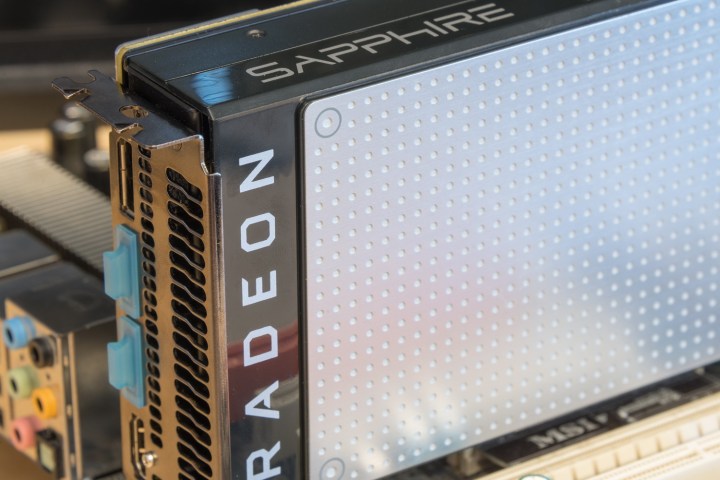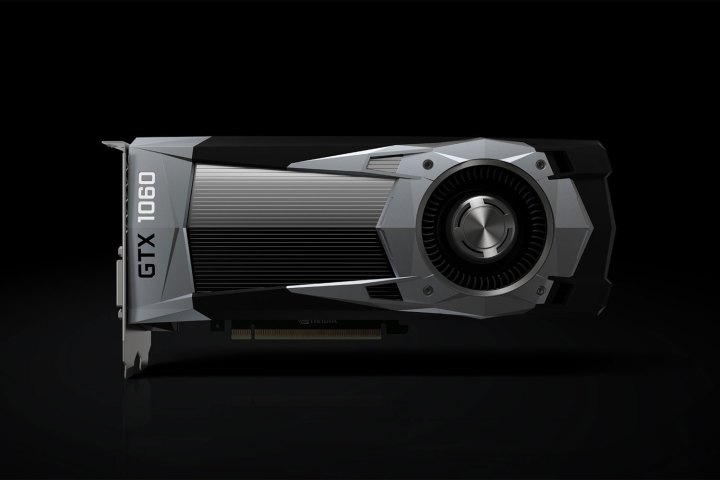
Take the latest releases from the two big GPU companies, AMD and Nvidia. Shortages of high bandwidth memory saw last year’s Fury cards available in only small quantities, and AMD’s more recent RX series is rare, too. Finding a GTX 1070 in the weeks following its release proved almost impossible. When we wrote a piece on its limited availability back in June, we could only find one across a number of online retailers.
This comes hand-in-hand with another frustrating trend — inflated pricing. Of course, there are always going to be Ebay and Amazon sellers who list much wanted items for hundreds of dollars more than they are worth. But the problem is more persistent with graphics cards. Often, it seems retailers ignore the MSRP entirely in order to maximize their profits, especially during launch windows when stock is hard to come by.
We decided to investigate, and reached out to several graphics card manufacturers and retailers to get their take on how the industry worked.
Yes, price hikes do happen
“We typically provide an MSRP for the retailers, but this does not always hold as some retailers have increased the pricing due to high demand and limited availability,” said Zotac’s marketing manager, Buu Ly, when we reached out for comment. “Also, the other thing that causes confusion is marketplace sellers who list at some ridiculously high prices. These show first when the item listed at MSRP is out of stock.”
“It’s difficult to control the retailer pricing since there are so many other similar products from other manufacturers and demand is high,” he said.
Manufacturers are making it clear they’re not the source of inflated price tags
So, there we have it from the horse’s mouth. It would seem that even if it’s seen as a distasteful practice by those manufacturing and tweaking the references designs from Nvidia and AMD, it’s somewhat accepted that prices are going to rise when availability gets low.
AMD graphics partner Sapphire confirmed that this was indeed the case, but seemed more indifferent about it, claiming that it was merely part of the way the markets operate.
“We maintain a price to the channel customer, but it is the market and its forces that dictates the MSRP to the end user. This is simply a case of supply and demand,” said global marketing lead at Sapphire, Philip Wynn Jones.
To put it another way, the manufacturers are making it clear they’re not the source of inflated price tags. They set a price to retailers, and the retailers can do what they choose after that.
Pricing problems aren’t short-term
Although the availability of the latest generations of cards from AMD and Nvidia are a lot better now, we decided to look at a few different marketplaces to see how close certain retailers were to the original MSRP set out by Nvidia and its partner companies.
For this we looked at three U.S. based retailers: Newegg, Tiger Direct and Amazon, as well as one British retailer, OverclockersUK. In each case we found the most barebones version of the cards, with stock clocks, coolers, and design. These were not the slightly more expensive Founders Editions, but as bog standard as we could find.
- 1. Nvidia GTX 1060
- 2. AMD RX-480
For the purpose of these results, the MSRP was taken directly from Nvidia/AMD, while retail pricing was found on the live retailer sites at the time of writing.
| MSRP | Newegg | Tiger Direct | Amazon | Overclockers UK | |
| Nvidia GTX 1080 | $600 | $630 | $652 | $610 | £550/$726 |
| Nvidia GTX 1070 | $380 | $400 | $440 | $400 | £350/$462 |
| Nvidia GTX 1060 6GB | $250 | $250 | $256 | $250 | £230/$300 |
| Nvidia GTX 1060 3GB | $200 | $200 | $218 | $200 | £180/$235 |
| AMD RX 480 8GB | $230 | $260 | $260 | $270 | £220/$286 |
| AMD RX 480 4GB | $200 | $230 | $250 | $230 | £190/$248 |
These results are not meant to point fingers at those who may raise prices more than others, but is merely to show that it’s not uncommon for these products to sell in excess of what the manufacturer’s recommended prices for these products actually are – even now, a while after these cards are released.
Note: In the UK those prices are skewed by VAT, but removed, OCUK is actually very close, if not under MSRP in almost all cases.
If we were to draw anything else from these results, it would be that Amazon’s more contested marketplace seems to lead to more competitive prices for consumers that better reflect the suggested retail price, but Newegg isn’t far behind in most respects.
It’s clear that there’s currently a difference in pricing between AMD and Nvidia. While both are more expensive than MSRP, some Radeon RX 480 models are up to $50 more than MSRP. That’s a lot for a card that’s supposed to be sold for as little as $200. Inflated prices are cutting into the appeal, as the GTX 1060 is just as fast or faster than the RX 480, and currently available for less.
It’s dependant on the company
So, why does that happen?
As unscrupulous as it may be to raise the prices when you know people want products more, it may be that retailers are simply trying to make enough money to justify stocking smaller numbers of graphics cards. Poor margins — that is, the amount made per sale — are slim across PC hardware, and graphics cards are especially brutal.
Buu Ly at Zotac said margins are usually somewhere between two and three percent per card. Overclockers’ UK retail manager Steve Levitt confirmed this, saying that rarely does OCUK make more than £30 ($40) per card sold, and often it’s less than that, since most cards sold are not high-end models.

You could argue that Nvidia’s more expensive “Founders Edition” cards are its way of explaining away why the GPUs tend to be more expensive around launch when availability isn’t great, but there’s little stopping retailers from tacking their own additional costs and profits on top of that again.
When I asked Buu Ly about stock allocation, he said it was mainly to do with sales targets and performance. The same goes for Nvidia deciding which of its partners get access to the most reference boards. While he said there was no way to know Nvidia’s internal metrics on the matter, he said it was likely dependent on past sales figures and product movement.
On the AMD end of the spectrum, Phillip Jones at Sapphire confirmed to us that stock allocation was related to how established your relationship with AMD was.
“Sapphire is a key partner to AMD with an established global channel, which means that we receive our fair share of allocation based on our global reach,” he said.
Price hikes suck, but they’re here to stay
It seems fair to say that retail prices often stray from the manufacturer suggested retail price, even when manufacturers would rather they didn’t. The reason seems to be simple supply and demand. Though it’d be nice if cards were always sold at MSRP, retailers are savvy, and prefer to make the most of their stock.
Partner shops seem to be a factor. They can contribute to ridiculous price spikes, which we often see at launch. There’s nothing to stop someone from flipping a pre-order for profit on Amazon. However, as prices smooth out over time, it appears more competitive retailers like Amazon, which has many, many listings for cards from many sources, can result in better pricing.
We reached out to both Newegg and Tiger Direct for their comments on this story, but did not hear back.
We’d like to say this story has a happy ending, but there’s no sign the practice of inflated pricing will stop. High-end GPUs are difficult to produce in volume, and a dedicated set of gamers demand the best. There’s every reason to think inflated pricing will continue for as long as people prove willing to spend extra cash to grab the latest and greatest.






